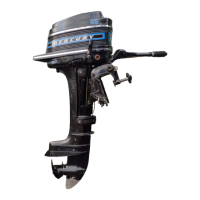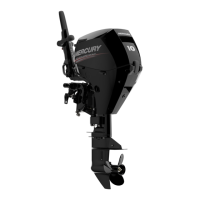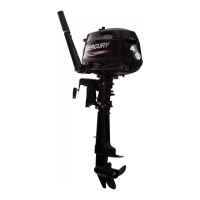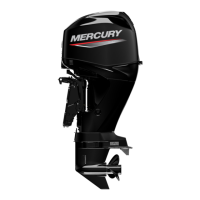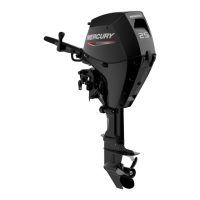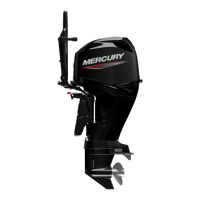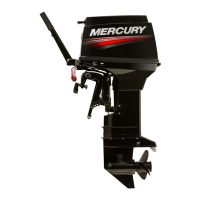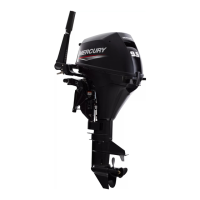GENERAL INFORMATION
90-828631R3 MARCH 1999 Page 1C-3
Due to the horsepower/rpm characteristics of an engine, this will result in further loss of
horsepower at the propeller with another decrease in boat speed. This secondary loss, how-
ever, can be regained by switching to a smaller pitch propeller that allows the engine to again
run at recommended rpm.
For boaters to realize optimum engine performance under changing weather conditions, it
is essential that the engine have the proper propeller to allow it to operate at or near the top
end of the recommended maximum rpm range at wide-open-throttle with a normal boat
load.
Not only does this allow the engine to develop full power, but equally important is the fact
that the engine also will be operating in an rpm range that discourages damaging detona-
tion. This, of course, enhances overall reliability and durability of the engine.
Boat
WEIGHT DISTRIBUTION
1. Proper positioning of the weight inside the boat (persons and gear) has a significant ef-
fect on the boat’s performance, for example:
a. Shifting weight to the rear (stern)
(1.)Generally increases top speed.
(2.)If in excess, can cause the boat to porpoise.
(3.)Can make the bow bounce excessively in choppy water.
(4.)Will increase the danger of the following - wave splashing into the boat when
coming off plane.
b. Shifting weight to the front (bow)
(1.)Improves ease of planing off.
(2.)Generally improves rough water ride.
(3.)If excessive, can make the boat veer left and right (bow steer).
BOTTOM
For maximum speed, a boat bottom should be nearly a flat plane where it contacts the water
and particularly straight and smooth in fore-and-aft direction.
1. Hook: Exists when bottom is concave in fore-and-aft direction when viewed from the
side. When boat is planing, “hook” causes more lift on bottom near transom and allows
bow to drop, thus greatly increasing wetted surface and reducing boat speed. “Hook”
frequently is caused by supporting boat too far ahead of transom while hauling on a trail-
er or during storage.
2. Rocker: The reverse of hook and much less common. “Rocker” exists if bottom is con-
vex in fore-and-aft direction when viewed from the side, and boat has strong tendency
to porpoise.
3. Surface Roughness: Moss, barnacles, etc., on boat or corrosion of outboard’s gear
housing increase skin friction and cause speed loss. Clean surfaces when necessary.
WATER ABSORPTION
It is imperative that all through hull fasteners be coated with a quality marine sealer at time
of installation. Water intrusion into the transom core and/or inner hull will result in additional
boat weight (reduced boat performance), hull decay and eventual structural failure.
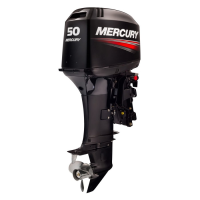
